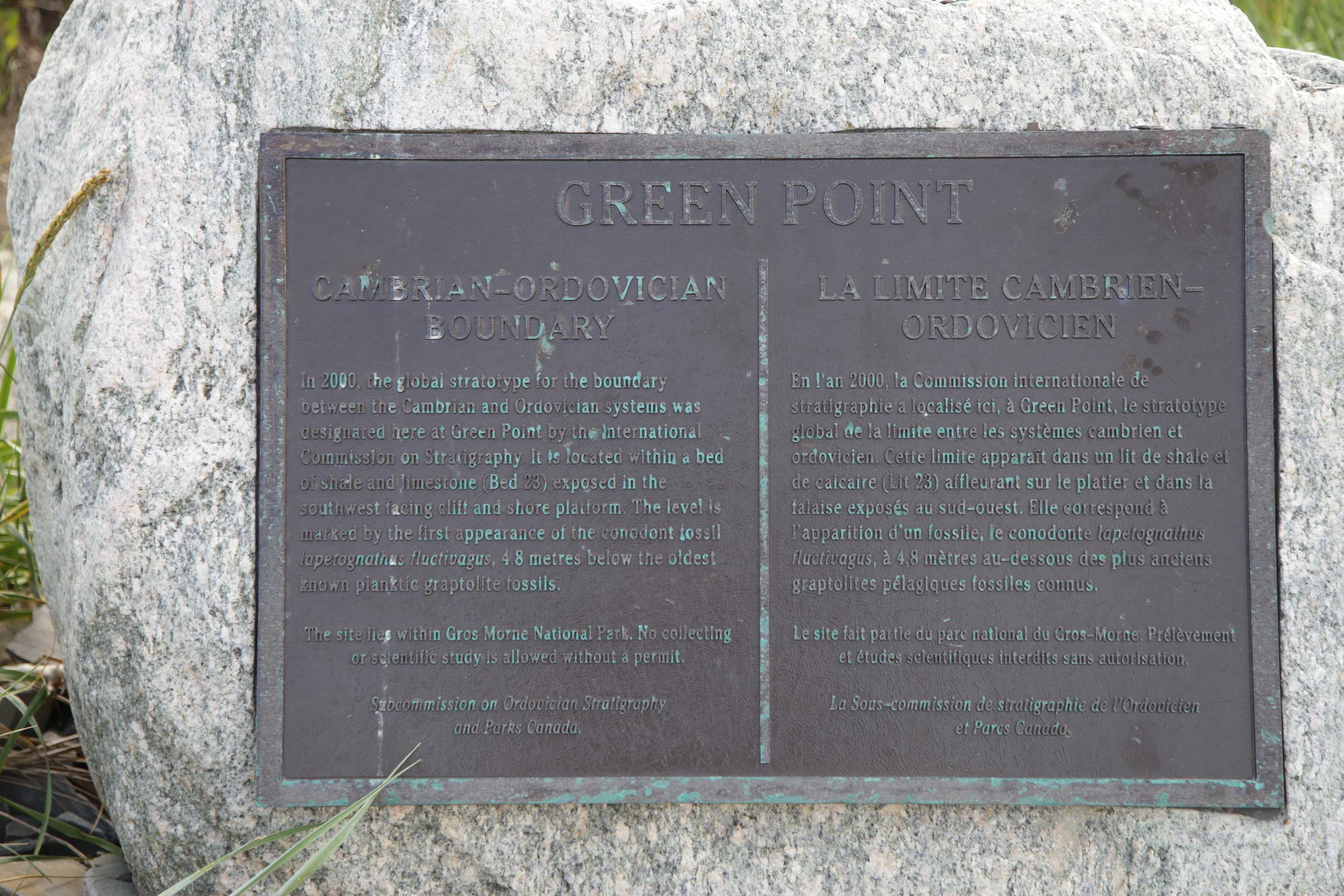Stratigraphy is the way geologists defines the periods of the geologic timescale. A stratotype is a section of continuously deposited strata where a single horizon is chosen as a boundary. One of such international stratotype marking the Cambrian – Ordovician boundary is defined at Green Point in Gros Morne National Park, New- foundland, Canada.

This place was the theatre of a original artistic installation conceived by visual artist Sydney Lancaster and accomplished with the indispensable help of her friend geologist John W.F. Waldron of the Alberta University. I had the pleasure to talk with both of them in front of their poster prepared for the Earth and Art session at EGU 2015, and if there is is a word describing the experience this will be “harmony”.
There was harmony in the way they approached each other, and this is confirmed when we get deeper and deeper in the work they have done also together with 6 volunteers to instal their Boundary|Time|Surface: EPHEMERAL ARTWORK, and then documenting it with a video.
The very beginning was a scientific article from where they adapted a stratigraphic column:
Stratigraphic Column adapted from: R.A> Cooper, G.S. Nowlan, and S.H. Williams 2001 “Global Stratotype Section and Point for base of the Ordovician System. Episodes, Vol 24, no.1.
Of course to the eyes of a profane it is not immediate to understand how the borderline between a geological period and another can be established: geologists have different methods to date the age of rocks, combining also this kind of studies with Orogeny. In the present case, the artistic installation allowed to visualize on the surface of the Earth the invisible border between the two geological periods: the Cambrian and the Ordovician. It was also a way to explore human relationship with natural processes and the arbitrary nature of human-defined boundaries as markers of space and time. It drew attention to the human propensity for constructing barriers (real and imaginary) in order to lay claim to the landscape, and to render space and time comprehensible. Needless to say how this is a matter of topical importance.
The installation is also an example of what is called Land Art since it was made by collecting driftwood logs and rocks found at or near Green Point, along a limestone bed that was previously chosen as the internationally recognized boundary separating the Cambrian and Ordovician periods in geological history. In this way the artwork is linked to the surrounding landscape. We can add how it was important to study the geological and weather conditions of the site in order to make the installation possible. So it took days of preparation in the field, making all the team stay in strict contact with nature. You can follow all the steps of the work in Sydney Lancaster website.
Have a look at the final result:
Boundary|Time|Surface – time lapse from Sydney Lancaster on Vimeo.
Time lapse footage of the dissolution of Boundary|Time|Surface, an ephemeral sculptural installation created by Sydney Lancaster (with the assistance of John Waldron) at Green Point, NL on June 22 2014. Copyright 2014, Sydney Lancaster. All rights reserved.
more details at:
Sydney Lancaster & John W.F. Waldron presentation at the EGU 2015

I commenti sono chiusi.